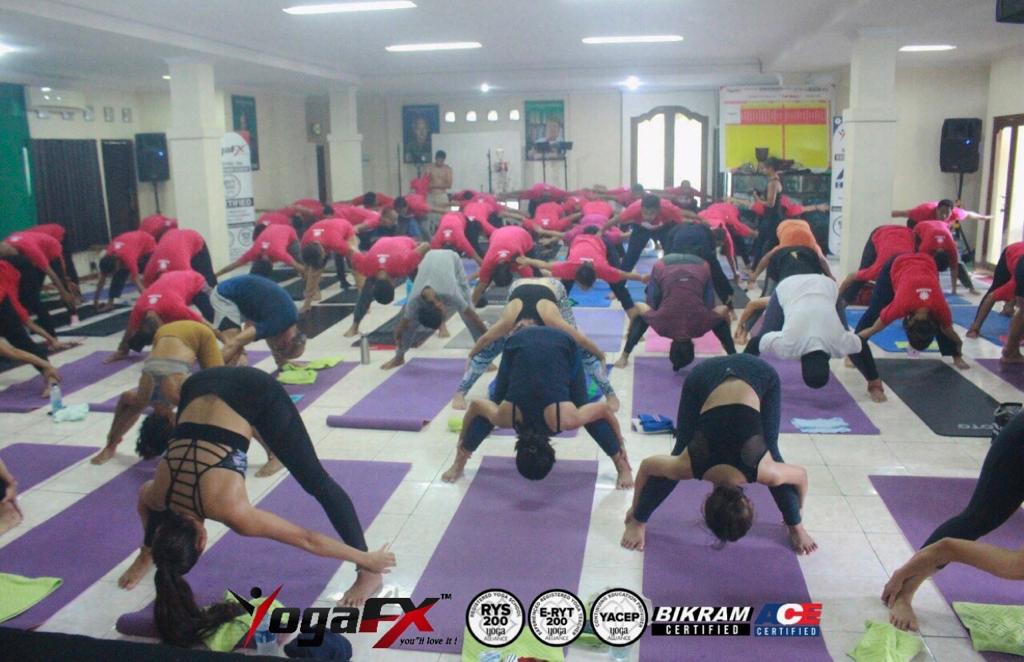The benefits of hot yoga versus regular yoga have long been a topic of discussion among fitness enthusiasts and yogis alike. While both practices offer numerous advantages for the mind, body, and soul, hot yoga introduces a unique element that sets it apart from traditional yoga. In this article, we will explore the benefits of hot yoga versus regular yoga and delve into how the added element of heat can enhance your yoga experience and take your practice to new heights. Whether you’re a seasoned yogi or new to the mat, understanding the distinctions and benefits of hot yoga versus regular yoga can help you make an informed decision about which practice best aligns with your goals and preferences.

Understanding Hot Yoga
Hot yoga, also known as Bikram yoga or the 26 and 2 yoga sequence, is a dynamic form of yoga practiced in a heated room. The temperature typically ranges from 90 to 105 degrees Fahrenheit (32 to 40 degrees Celsius). This combination of heat and challenging postures promotes increased blood circulation, flexibility, and detoxification. The structured practice of hot yoga targets every muscle group, providing a balanced and invigorating experience.
“Setting Goals Is The First Step In Turning The Invisible Into The Visible”
Benefits of Hot Yoga
Hot yoga offers a range of benefits that go beyond those of regular yoga. Here are some of the transformative advantages:
1. Improved Flexibility:
Hot yoga’s heated environment warms up the muscles, allowing for deeper stretches and increased range of motion. The heat helps to relax the muscles, facilitating greater flexibility and reducing the risk of injuries.
2. Detoxification:
The heat in hot yoga promotes sweating, which aids in the release of toxins from the body. The combination of movement and heat facilitates a deep detoxification process, leaving you feeling refreshed and rejuvenated.
3. Enhanced Cardiovascular Workout:
The elevated room temperature in hot yoga intensifies the practice, elevating heart rate and providing a cardiovascular workout. The increased heart rate helps improve cardiovascular health, stamina, and endurance.
4. Mental Focus and Mindfulness:
The challenging nature of hot yoga requires mental resilience and concentration. The heat challenges your ability to stay present and focused, cultivating mindfulness and enhancing your mental strength.
5. Stress Reduction and Relaxation:
Hot yoga provides a sanctuary for stress reduction and relaxation. The heat aids in the release of endorphins, reducing anxiety and creating a sense of calm. The combination of heat, movement, and mindful breathing helps melt away stress and tension, leaving you feeling centered and balanced.

Benefits of Regular Yoga
While hot yoga offers unique advantages, regular yoga practices also provide numerous benefits:
1. Increased Strength and Tone:
Regular yoga builds strength and tones muscles through bodyweight resistance. Holding poses and flowing through sequences helps develop lean muscle mass, leading to improved strength and a toned physique.
2. Balance and Stability:
Regular yoga incorporates various standing and balancing poses that improve balance and stability. These poses challenge your body’s equilibrium, improving coordination and reducing the risk of falls and injuries.
3. Improved Posture:
Regular yoga helps correct posture and align the body properly. By strengthening the core and lengthening the spine, yoga promotes better posture, reducing back pain and enhancing overall body alignment.
4. Stress Reduction and Mental Well-being:
Regular yoga practices, such as Hatha or Vinyasa, promote relaxation, reduce stress, and improve mental well-being. The combination of movement, breathwork, and meditation cultivates a sense of inner peace and tranquility.
5. Increased Mind-Body Connection:
Regular yoga encourages a deeper connection between the mind and body. The focus on breath and mindful movement helps develop self-awareness, allowing you to tune in to the sensations and needs of your body.
Hot Yoga versus Regular Yoga: Comparative Analysis
Hot yoga and regular yoga each have their unique benefits and appeal. The choice between the two ultimately depends on personal preferences, goals, and physical condition. Some individuals may thrive in the heat and prefer the detoxifying effects of hot yoga, while others may prefer the gentle flow and focus of regular yoga.
It’s essential to listen to your body and honor its needs. If you enjoy a challenging and intense practice, hot yoga might be the perfect fit. On the other hand, if you prefer a practice that focuses on alignment, breath, and flexibility, regular yoga may be more suitable.

Conclusion
The benefits of hot yoga versus regular yoga offer practitioners distinct advantages. Whether you choose the dynamic 26 and 2 yoga sequence, Bikram yoga, or regular yoga practices like Hatha or Vinyasa, both paths lead to improved physical strength, flexibility, mental focus, and overall well-being.
For those interested in deepening their hot yoga practice and sharing its benefits with others, YogaFX offers comprehensive hot yoga teacher training programs. Led by Mr. Ian, a seasoned instructor, these programs are Yoga Alliance certified and recognized by ACE. Enrolling in the Bikram Hot YogaFX teacher training allows you to gain the knowledge and skills to teach hot yoga effectively and inspire others on their wellness journey.
Explore the transformative power of hot yoga versus regular yoga and choose the practice that resonates with you. Whether you embrace the heat or prefer a more gentle approach, both hot yoga and regular yoga have the potential to bring profound physical, mental, and spiritual benefits. Start your journey today and discover the transformative power of yoga.

